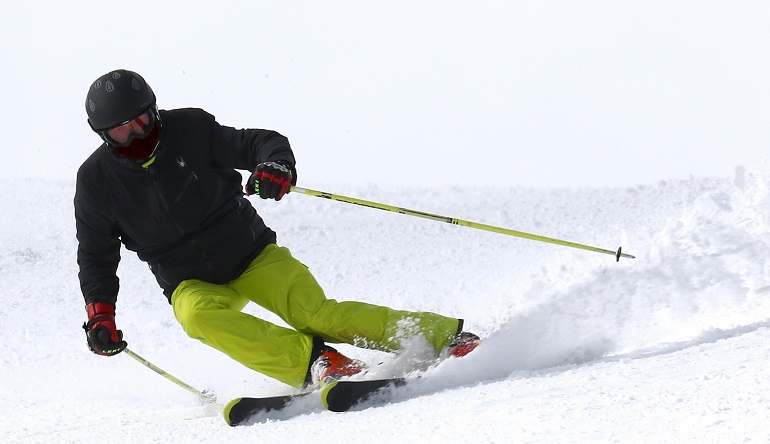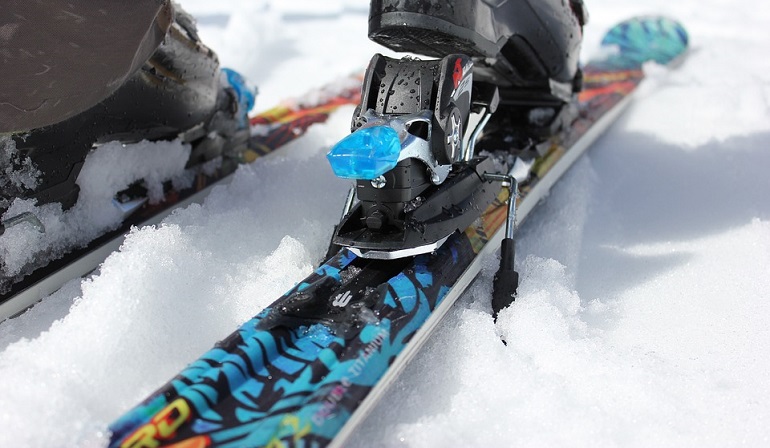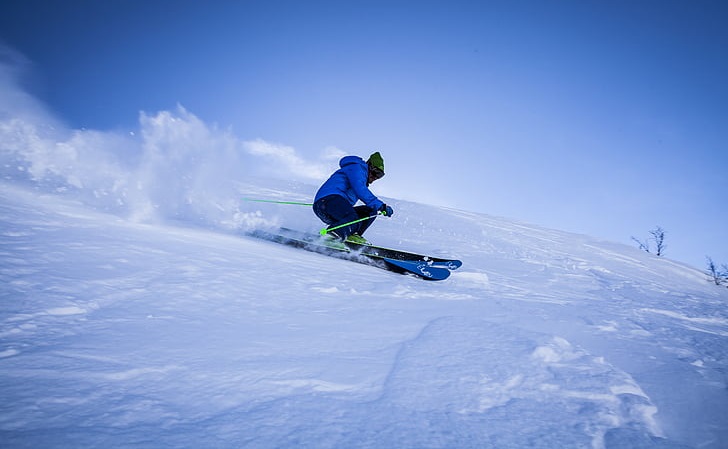Sounds crazy, right? I mean, who would be willing to ski on slippery slopes of ice?
Even the skaters have a hard time dealing with flat surfaces. They slide and fall face first or on their butt. And this is a sliding hill we’re talking about.
Because, of course, skiing is all about ski ventures. Now imagine racing forward on the icy slope where you have little or no control. It feels scary and downright impossible.
But it’s not!
And we’re here to show you how you can turn this challenging situation into a thrilling experience. These ski tips may take your ski game to the next level. Show everyone the pro that you are!
Overview if Icy Slopes
Firstly, get to know more about how icy slopes are formed because knowledge will always give you the upper hand. The more you understand their makings, the better control you can gain.
And when you have control, you can boost your ski game. Regardless of the icy patches that hurdle you, ski racing will be more thrilling in such ice sections.
Before heading to the slopes, it’s crucial to choose the right skis for your needs and you should also need to know how to ski in powder properly and become proficient in powder skiing.

Even as race-prepared skiers, you should have an understanding of hard-packed snow and loose snow. Whether it’s solid ice or fresh powder, the more you know, the better you go!
So, before we head on the journey of how to ice ski like a pro, let’s apprehend the transition of hard snow:
How Are Icy Slopes Formed?
Icy slopes are precisely what their names suggest… ice.
When the fresh snow has yet to come, the previous regular snow melts and then freezes and, thus, becomes ice. The fluctuation in temperature speeds up this process.
If the season is to blame, then the sport itself is involved too, because many skiers have skied away the fresh powder of the surface to the corners revealing the icy patch below the snow trail.
In some cases, for race courses, icy sections are made to enhance the difficulty for skiers. Such trails are usually called skiing ice.
But most recreational skiers find icy conditions to increase their skiing venture. You have to have fun with what you get, right?
So, once you get the ‘how’ of icy snow, let’s get to know why it’s dangerous.
Why Is It Hard To Ski Downhill on Icy Snow?
Falling is easy; skiing on ice is not! Why? Because it’s ice. It’s slippery, has decreased edge control, and is harder to regain. It’s more the angle of the skis than the fun of skiing.
Every skier, racer or otherwise, is advised to avoid ice or the icy section and to ski safely around it. You should not trail the icy patches if you can help it.

That’s because regular skiing or downhill ski races rely on the friction the loose snow causes. It is how the skis are able to pivot the turns or stop when needed.
With hard-packed snow, that becomes twice as difficult. The hard snow becomes a ground slide that increases your speed. And then, you either end with a hit or with sharp skidding because it decreases edge control and increases the sliding of your skis.
It’s tough, to say the least. And many are blown back toward the hard-packed snow. Even I can’t help but shiver, imagining the chill of the ice on my back… oof!
Challenges of Skiing in Icy Conditions
Hard-packed snow is not your average soft snow. It’s less gripping and more slipping.
You need a stable wide stance to maintain your balance, or you will skid on the slope, flailing your hands, wishing for a tree to help you stop… Or you might just tumble somewhere between that. I say it with experience, unfortunately.
With the hard snow, you need to force more weight on your skis or one ski when you need to turn. Because of less friction, you should apply more pressure on your skis to avoid skidding.
So you have to be mindful of these two hurdles of skiing. We will give you tips to counter those hurdles like a pro. Just scroll, and you will know.
Speed
Because of the momentum of ice, an increase in speed is inevitable, and so is the slide. Even a groomed skier has skied and taken sharp jabs of ice. They seek snow on the edge of the piste and use their skis to have more control over their speed.

What you have to do is to ensure you use your upper body position to create resistance. Use the edges of your skis to control your speed.
You can use your outside ski edges to turn and the inside edge of the skis for balance while sliding down the hill.
It’s important to keep your body weight centered over your skis, and your knees bent for maximum control.
Lack of Grip
The hard snow becomes slippery. A skier may try to side slip which can backfire. They rely on the outside ski to compensate for the lack of grip on ice.

To ensure you have a grip over your skis, the skis’ size always comes first. Make sure that they are made for skiing on ice when you buy them from your ski shop. Not for softer snow.
It is important that you rely on your outside ski and engage your edges to gain grip. Use your downhill ski poles when sliding on ice. Try to keep them off the hard snow to maintain balance.
Keep your weight on the heel of the skis to avoid an out-of-control slide. If you find piste, it will help maintain your traverse on the ice patches.
Use the edge of your ski for turns. The edge control is easier to maintain than the downhill pole. Maintain your center stance when bending.
A 30-degree angle works well. If you keep bending more than necessary, it will cause your ankles to be snowed. Get it?
How To Ski on Ice or Hard-Packed Snow?
There is technique and practice in play here. Well-groomed skiers also sharpen the edge of their skis before sliding on ice. Some would advise putting tons of wax on your skis so there would not be a need for two skis. One could endure all the skidding on the surface.
Aside from preparing the proper gear, there are some essentials you should always check when skiing. Whether on a hill or a mountain, these would prove advantageous.
Edge Control
Using your edges to control your speed is important, as this will help you stay in control as you slope down the hill. The more control you have with your edges, the more edge you have over your skis on packed snow.
Learn To Balance Against Your Outside Ski
This is the most important technique when skiing on an ice slope. The outside ski works as a steering wheel when you ski on ice.

With a balance of the outside ski, you will be able to turn in any direction needed at the moment.
Yes, that is quite possible on ice without taking a hit.
Practice Skiing With a Stable Stance
Body leaning forward and the position of your feet and legs at a suitable distance from each other is the stance you should aim for.
When you position yourself with a center stance, you stand nothing to lose and a lot of thrill with your skis on the hard-packed snow.
Start With a Skid To Get Down Safely
Add more weight to your body position when skiing on ice. Ideally, your upper body remains still while your legs and feet add weight. This way, your start is under control, and you don’t slide down the hill.
Don’t Panic or Freeze
Honestly, half of your ice patches are conquered like this. No other technique works as well as this one does.
Stand tall (or bent forward, if you will) when you slide your skis. Do that with confidence and glide past your ice patch like a pro!
Use Your Edges for Direction
One ski can help you determine the direction of your slide. You automatically slide toward that track when you use one edge to direct your skis.
The skis’ edges are your secret weapon against hard-packed snow.
Stack Your Weight Against the Outside Ski
When you do that, your ski creates friction due to the force and weight. That helps you gain control of your skiing direction.
Read the Surface
That is a sensible step to take whenever you want to ski on hard snow. It also allows you to forecast the weather. It helps knowing it won’t snow mid-track.
It helps you foresee the patches and helps you become ready for them. Then you don’t panic and ski like it is second nature!

Listen to Your Skis
Believe it or not, they work like your guts!
Understand what your skis say. If it is going in a direction you didn’t want it to go, it is time for you to understand what you can do differently to help you and your skis be on the same page.
After all, communication is the key!
Start To Carve on the Ice
No, carving on ice doesn’t involve sculpting!
What it does involve is better control. Use the edges of your skis to carve on the surface to create resistance and cause a more stable ski experience.
Conclusion
It is no less than art that must be mastered in order to ski without danger, confidently, and in style. Ice patches are tricky to overcome whether you’re a beginner or a seasoned skier. But training is the key. And so are these tips.
Even as a ski racer, preparing for these ice patches and hard-packed snow sections is essential. You can use the speed boost to your advantage, but it still is tricky to transition back to your initial momentum.
With this article, you have been given the tips, tricks, and techniques you need to ski like a pro. If you already consider yourself a pro, then add more seasoning to your knowledge!
Now get out there and have fun skiing on ice!
0 Comments